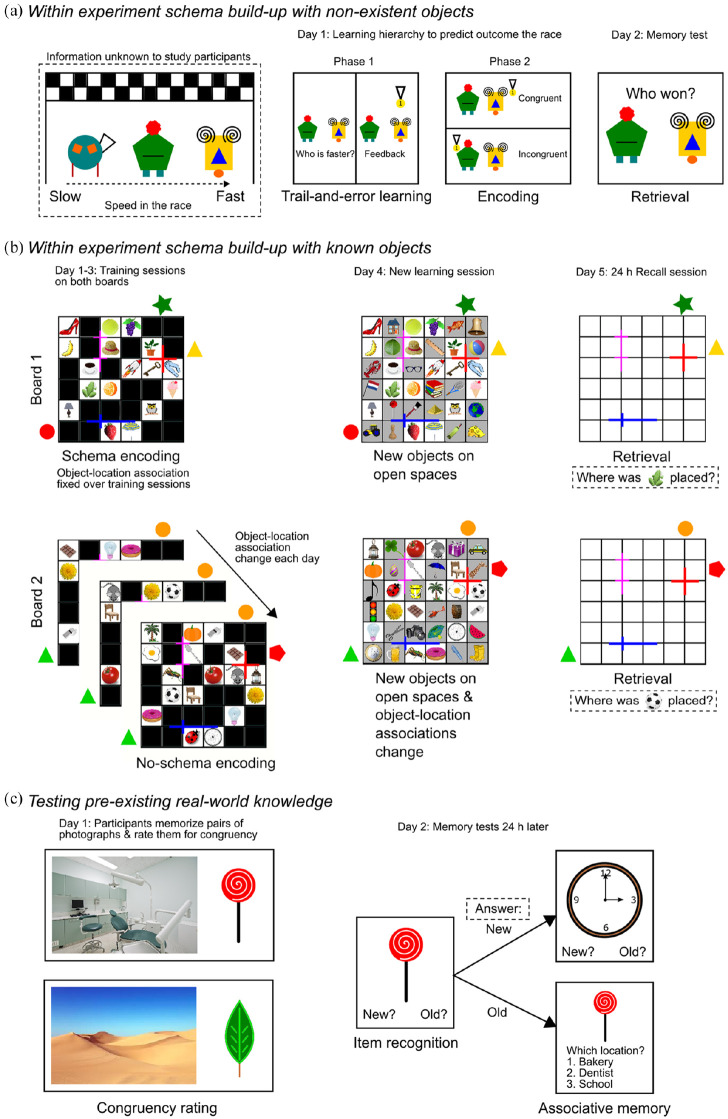Figure 1.
Examples human schema studies.
Overview of representative examples from human schema studies ranging from using intra-experimental new schema build-up of non-existent objects to testing pre-existing real-world knowledge. (a) Study design from Brod et al. (2015) in which participants acquired a new schema within the experiment through trail-and-error learning about the outcome of a race between two ‘fribbles’ (i.e. non-existing objects). After learning the hierarchy, participants learned both congruent (i.e. winner according to hierarchy) and incongruent (i.e. winner does not fit the hierarchy) pairs during the following encoding phase on which they were tested during the retrieval phase the next day. (b) Study design from Van Buuren et al. (2014) in which participants over multiple days had to learn associations between known objects and their location on both a schema board (i.e. object locations were the same on each encoding day) and no-schema board (i.e. object locations changed during each encoding day) with the help of both intra- and extra-board cues. On the last encoding day (Day 4), open spaces on both boards were filled with new objects. In addition, the objects on the no-schema board changed location again. On the retrieval day, participants were presented with an empty (schema/no-schema) board and had to retrieve the location of one of the objects. (c) Study design from Van Kesteren et al. (2013) in which participants had to memorise pairs of photographs portraying one known object and one real-world scene which were either congruent (i.e. they co-occur in the real world) or incongruent (i.e. they do not co-occur in the real world). The next day, the participants were tested on their item recognition followed by an associative memory task.

